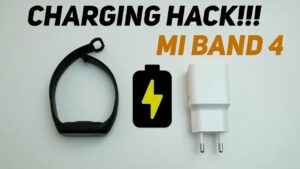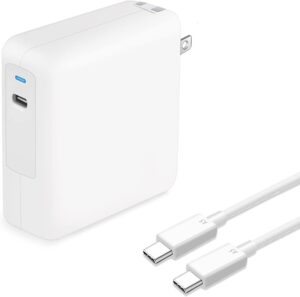Is your charger taking forever to charge your phone? Are you tired of waiting around for your battery to reach full power? If you’ve been wondering, “How do I know if my charger is fast?” then you’re in luck. In this article, we’ll explore simple ways to determine the speed of your charger, ensuring that you’re equipped with the knowledge to charge your devices quickly and efficiently. No more long waits or frustratingly slow charging times. Let’s dive right in and find out how to identify a fast charger.
How Do I Know If My Charger Is Fast?
With the increasing reliance on electronic devices in our daily lives, the need for fast and efficient charging has become essential. If you find yourself wondering whether your charger is up to the task, you’ve come to the right place. In this article, we will explore various ways to determine if your charger is fast and discuss important factors to consider when evaluating charging speeds. So, let’s dive in and find out how to identify a fast charger!
Understanding Charging Speeds and Terminology
Before we explore ways to assess charging speed, it’s important to familiarize ourselves with some basic terminology related to charging technology. Here are a few key terms to know:
- Wattage: Wattage refers to the amount of power a charger can deliver. Higher wattages generally indicate faster charging speeds.
- Voltage: Voltage measures the electrical potential difference between two points. In the context of charging, it determines the speed at which energy is transferred to your device.
- Ampere (Amp): Ampere, often referred to as “amp,” measures the current flowing through a charger. It determines how quickly electricity reaches your device.
- USB Power Delivery (USB PD): USB PD is a fast-charging protocol that allows for higher power transfer over USB connections. It enables faster charging for supported devices.
Now that we have a better understanding of the terminology, let’s explore some methods to determine the charging speed of your charger.
1. Check the Charger’s Wattage
The wattage of a charger is a primary indicator of its charging speed. To find the wattage:
- Look for the wattage information printed on the charger itself. It is typically indicated in watts (W) or milliwatts (mW).
- If you can’t find the wattage on the charger, check the charger’s packaging or any accompanying documentation. Manufacturers often provide this information for reference.
- If all else fails, you can search for the charger’s model number online to find specifications and wattage details.
Once you have determined the charger’s wattage, refer to the following guidelines to assess its charging speed:
- 5W (5 watts): Basic charging speed suitable for smaller devices like smartphones and wireless earbuds.
- 10W-12W: Faster charging suitable for smartphones and small tablets.
- 18W-30W: Rapid charging suitable for larger tablets, laptops, and fast-charging smartphones.
- 45W-100W: Extremely fast charging suitable for high-powered laptops and advanced devices.
2. Evaluate the Voltage and Ampere
Apart from wattage, voltage and ampere play crucial roles in determining charging speed. Most chargers operate at 5 volts (V), but some higher-powered chargers support 9V or 12V for faster charging. To identify the voltage of your charger:
- Inspect the charger’s labeling or look for voltage information near the power output specifications.
- Check the charger’s packaging or documentation for voltage details if not indicated on the charger itself.
- If the charger supports variable voltage, it may be mentioned in the charger’s description.
Regarding ampere, a higher ampere rating allows for faster charging. Most smartphone chargers have a rating of 1A (1 amp) or 2.1A (2.1 amps). More powerful chargers designed for tablets or laptops may have ratings of 2.4A or higher. It’s important to note that your device must also support higher ampere ratings to take advantage of faster charging speeds.
3. Look for USB Power Delivery Support
USB Power Delivery (USB PD) is a fast-charging protocol that allows for efficient and higher power transfer over USB connections. It enables faster charging for supported devices such as laptops, tablets, and smartphones.
To determine if your charger supports USB PD:
- Check the charger’s packaging or documentation for any mention of USB Power Delivery.
- Inspect the charger itself for USB PD branding or related labels.
- If you can’t find any explicit indications, you can search for the charger’s model number or consult the manufacturer’s website for specifications.
USB PD chargers can deliver higher wattages, offering faster charging for compatible devices. Additionally, USB PD chargers often provide the ability to charge multiple devices simultaneously.
4. Read User Reviews and Conduct Research
User reviews can be an invaluable resource when evaluating the performance of a charger. Reading reviews on e-commerce platforms or technology websites allows you to gather real-world feedback from other users who have tested the charger’s capabilities. Look for reviews that specifically mention charging speed, compatibility, and the overall user experience.
Conducting research on trusted technology websites and forums can also provide valuable insights into charging speeds. Many technology enthusiasts and experts test various chargers and share their findings, which can help you make an informed decision when selecting a fast charger.
5. Consider Brand Reputation and Certification
The reputation of the charger’s manufacturer can be an indicator of its quality and performance. Established brands with a strong track record often invest in research and development to deliver efficient and reliable charging solutions. Additionally, chargers that carry certifications such as USB-IF certification or Qualcomm Quick Charge certification have undergone rigorous testing to ensure compatibility and fast charging capabilities.
When selecting a charger, consider trusted brands and look for any certifications that validate the charger’s performance.
Determining if your charger is fast entails considering its wattage, voltage, ampere, USB PD support, user reviews, and brand reputation. By familiarizing yourself with the terminology and conducting thorough research, you can confidently assess the charging speed of your charger and make informed decisions when purchasing a new one. Remember, selecting an appropriate charger that matches your device’s requirements ensures efficient and speedy charging, saving you valuable time and keeping your devices ready for use.
Remember to always prioritize safety and use chargers that comply with industry standards and regulations.
How to identify a Fast Charger Cable and Adapter ?
Frequently Asked Questions
How can I determine if my charger is fast?
To determine if your charger is fast, you can consider the following factors:
What is the output current of my charger?
Check the specifications of your charger to find the output current. A fast charger usually has a higher output current, typically listed in amperes (A).
What is the voltage output of my charger?
Fast chargers often provide a higher voltage output compared to standard chargers. Look for the voltage specification, usually listed in volts (V).
Does the charger support fast charging technologies?
Check if your charger supports fast charging technologies such as Quick Charge (Qualcomm), Power Delivery (USB-C), or Adaptive Fast Charging (Samsung). These technologies enable faster charging speeds when used with compatible devices.
Are there any indicators on the charger itself?
Some chargers have indicators or labels indicating fast charging capability. Look for words like “Fast Charge,” “Quick Charge,” or logos representing supported fast charging technologies.
Can my device support fast charging?
Even if you have a fast charger, your device must also support fast charging to benefit from the faster charging speeds. Check your device’s user manual or specifications online to see if it is compatible with fast charging.
Final Thoughts
If you’re wondering how to determine if your charger is fast, there are a few key factors to consider. First, check the wattage rating of your charger. A higher wattage typically indicates faster charging speeds. Additionally, look for chargers that support fast charging technologies such as Power Delivery (PD) or Qualcomm Quick Charge (QC). These technologies enable faster charging for compatible devices. Lastly, consider the charging cable you’re using. Using a high-quality, USB-C to USB-C cable can ensure optimal charging speeds. By considering these factors, you can easily determine if your charger is fast and enjoy quicker charging times for your devices.




